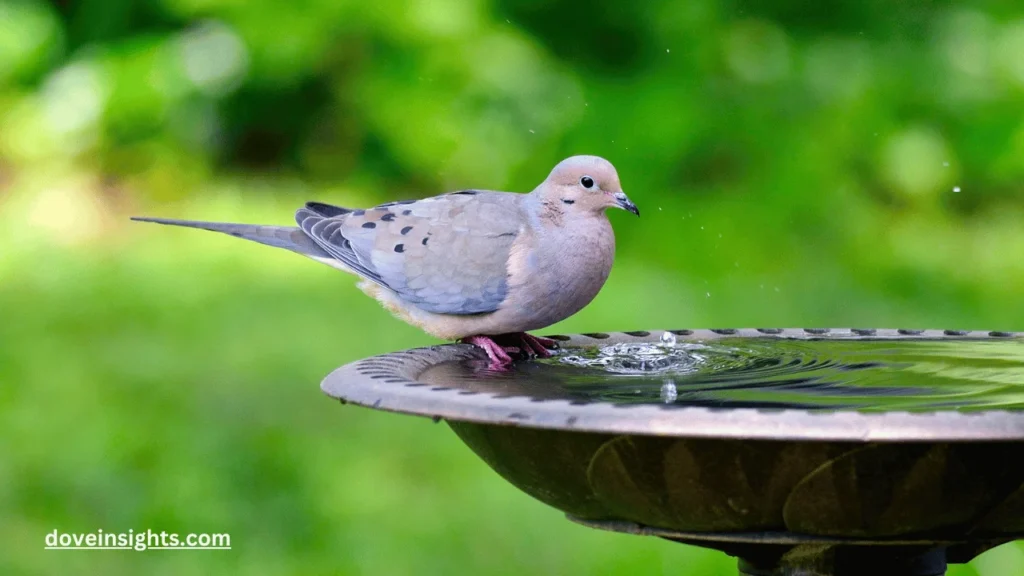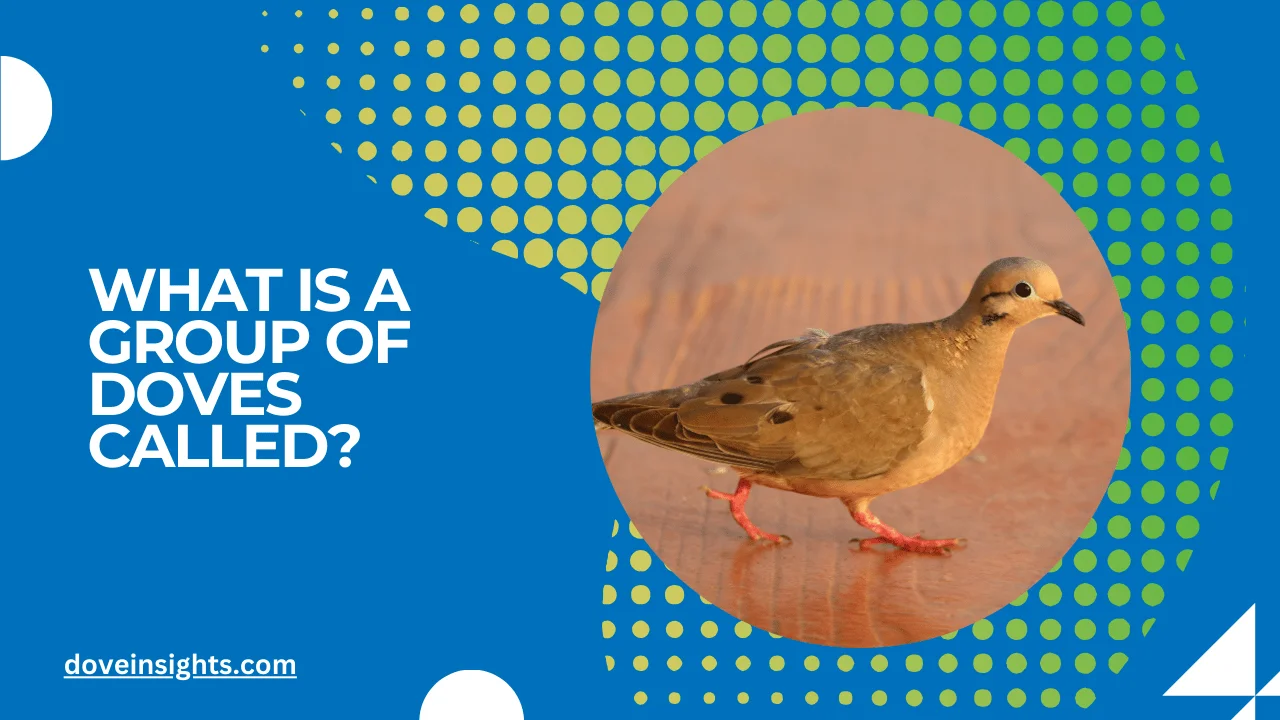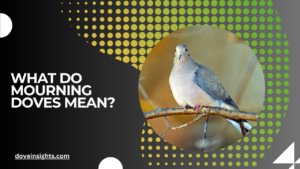Doves have long been associated with peace, love, and serenity, often symbolizing hope and comfort in times of turmoil.
But have you ever wondered what to call a group of these peaceful creatures when they come together? While we often envision doves soaring gracefully through the sky or perched peacefully on a branch, there’s much more to these birds than their symbolic significance.
Understanding the terminology behind a group of doves can add a new layer of appreciation for these gentle creatures.
In nature, many animals have unique names for their group formations. While we commonly refer to a group of crows as a “murder” or a group of lions as a “pride,” doves also have their own special collective term.
But the name for a group of doves isn’t just a matter of trivia—it carries a deeper connection to the bird’s behavior, its cultural associations, and the roles doves play in our ecosystems.
This article delves into the intriguing question, “What is a group of doves called?” and explores the significance behind the terms used to describe these groups.
From historical roots to modern-day uses, we’ll uncover the layers of meaning that come with the terminology of dove groups.
Whether you’re a bird enthusiast, a symbol lover, or simply curious about these beautiful creatures, this post will answer your questions and provide insights into the fascinating world of doves.
Contents
- 1 Understanding the Collective Noun for Doves
- 2 Why Are Groups of Doves Called “Grace” or “Flock”?
- 3 The Symbolism Behind Dove Groups
- 4 The Behavior and Social Structure of Doves in Groups
- 5 How Doves Form Groups and Why It Matters
- 6 Conclusion:
- 7 FAQ’s
- 7.0.1 What is the most common term for a group of doves?
- 7.0.2 Why is a group of doves sometimes called a “grace”?
- 7.0.3 Can doves form mixed-species groups?
- 7.0.4 Do doves always stay in groups?
- 7.0.5 Are doves more likely to form groups in urban environments?
- 7.0.6 What is the significance of a “flock” of doves in religious contexts?
Understanding the Collective Noun for Doves
The most commonly known term for a group of doves is a “flock.” However, there are other terms used to describe dove gatherings depending on their behavior or environment.
A group of doves can also be called a “grace,” particularly when referring to their elegant flight patterns. This term reflects the graceful and peaceful nature of doves, which has been celebrated in various cultures and symbolisms.
A “flock” of doves typically refers to a more general gathering of the species, which could be temporary or migratory. On the other hand, the term “flight” is sometimes used to refer to a group of doves when they are flying together.
This reflects their tendency to migrate in large groups or congregate in flocks, often seen in both urban and rural settings. Understanding these terms not only enhances our vocabulary but also provides a deeper understanding of how doves interact and live.
Why Are Groups of Doves Called “Grace” or “Flock”?
The term “grace” used for a group of doves emphasizes their delicate nature and elegant movements. Doves are often associated with beauty and calmness, and this term reinforces the idea of doves moving gracefully together in the air or on the ground.
Their serene cooing and gentle flight have made them a symbol of love, peace, and tranquility, which is mirrored in the term “grace.”
On the other hand, the term “flock” is more widely used across the animal kingdom. Birds in general, including doves, travel in flocks for protection, socialization, and feeding.
Flocking behavior helps doves find safety from predators and increases the chances of locating food sources. The use of the term “flock” is a nod to this social structure and the survival instincts that drive doves to come together in groups.
The Symbolism Behind Dove Groups
The way we refer to a group of doves also taps into the rich symbolism associated with these birds. Throughout history, doves have symbolized peace, hope, freedom, and love. For example, a “flock” of doves might evoke images of harmony and unity, while a “grace” of doves could be seen as a reminder of the spiritual and serene qualities they represent.
In many cultures, doves are seen as messengers, bringing messages of love or peace from the heavens.
In some religious contexts, a group of doves can represent the Holy Spirit. In Christianity, doves symbolize divine peace, and seeing a group of doves may be interpreted as a sign of blessing or divine presence.
This symbolism ties directly to the terms used for their groups. The term “grace” suggests an ethereal quality that aligns with the dove’s status as a spiritual messenger.
The Behavior and Social Structure of Doves in Groups
Doves are naturally social birds, and their group behavior provides insight into their instincts and social structures.
They are often found in small to medium-sized groups, especially during feeding or migration. In urban areas, doves form large, visible flocks that can be seen roosting together on buildings or flying in synchrony across the sky.
Doves often gather in mixed-species groups where different types of dove species may coexist, such as Mourning Doves, Eurasian Collared Doves, and Rock Doves. These groupings provide not only protection but also social opportunities.
In the wild, these gatherings are temporary and serve important functions like mating, feeding, and navigating migration paths.
How Doves Form Groups and Why It Matters

The formation of dove groups is essential for the survival of the species. By coming together, doves can better protect themselves from predators and share resources such as food and water. The decision to form a group is also driven by environmental and seasonal factors.
For instance, doves may band together during the breeding season to ensure the safety of their nests or during migration to guide their movements across vast distances.
In urban settings, where resources are often abundant, doves may form even larger flocks, drawn together by human-provided food sources. These urban flocks often find shelter in parks, church steeples, or city plazas, where they enjoy safe spaces to rest and socialize.
As humans continue to impact natural environments, understanding how and why doves gather in groups can help us create better environments for these birds, ensuring their continued survival in both wild and urban settings.
Conclusion:
To conclude, the term for a group of doves—whether it’s a flock, a grace, or a flight—carries more than just linguistic interest. It reflects the birds’ symbolic significance, social behavior, and the roles they play in ecosystems.
As we’ve seen, a group of doves is not just a random collection; it’s a dynamic and purposeful gathering that offers both protection and opportunity for the birds.
Whether you are drawn to doves because of their peaceful symbolism or because of their fascinating behavior in nature, understanding what a group of doves is called enhances our connection to these graceful creatures.
The next time you spot a group of doves in your neighborhood or in the wild, you’ll have a deeper appreciation for the significance behind their gathering and the beauty they bring to our world.
FAQ’s
What is the most common term for a group of doves?
The most common term for a group of doves is a flock. This term is often used for many types of birds, including doves, especially when they are gathered together for migration, feeding, or socialization.
Why is a group of doves sometimes called a “grace”?
A group of doves can also be called a grace due to their elegant and peaceful nature. The term emphasizes their graceful movements, often seen in flight, which reflect the symbolism of calm and serenity that doves represent.
Can doves form mixed-species groups?
Yes, doves can form mixed-species groups. Different types of doves, such as Mourning Doves, Eurasian Collared Doves, and Rock Doves, may gather in the same areas, especially in urban environments where food and shelter are abundant.
Do doves always stay in groups?
While doves are social birds, they do not always stay in groups. They may be seen in small groups or alone, especially outside of the mating or migration seasons. Doves tend to form larger groups during times of increased social activity or when resources are abundant.
Are doves more likely to form groups in urban environments?
Yes, urban environments often provide abundant food sources, making doves more likely to form larger flocks. These urban flocks are often seen in parks, streets, and plazas, where doves have access to human-provided food and safe resting spaces.
What is the significance of a “flock” of doves in religious contexts?
In many religious traditions, especially in Christianity, a “flock” of doves symbolizes peace, love, and the Holy Spirit. The peaceful nature of doves has made them symbolic of divine blessing and serenity in various cultures.








